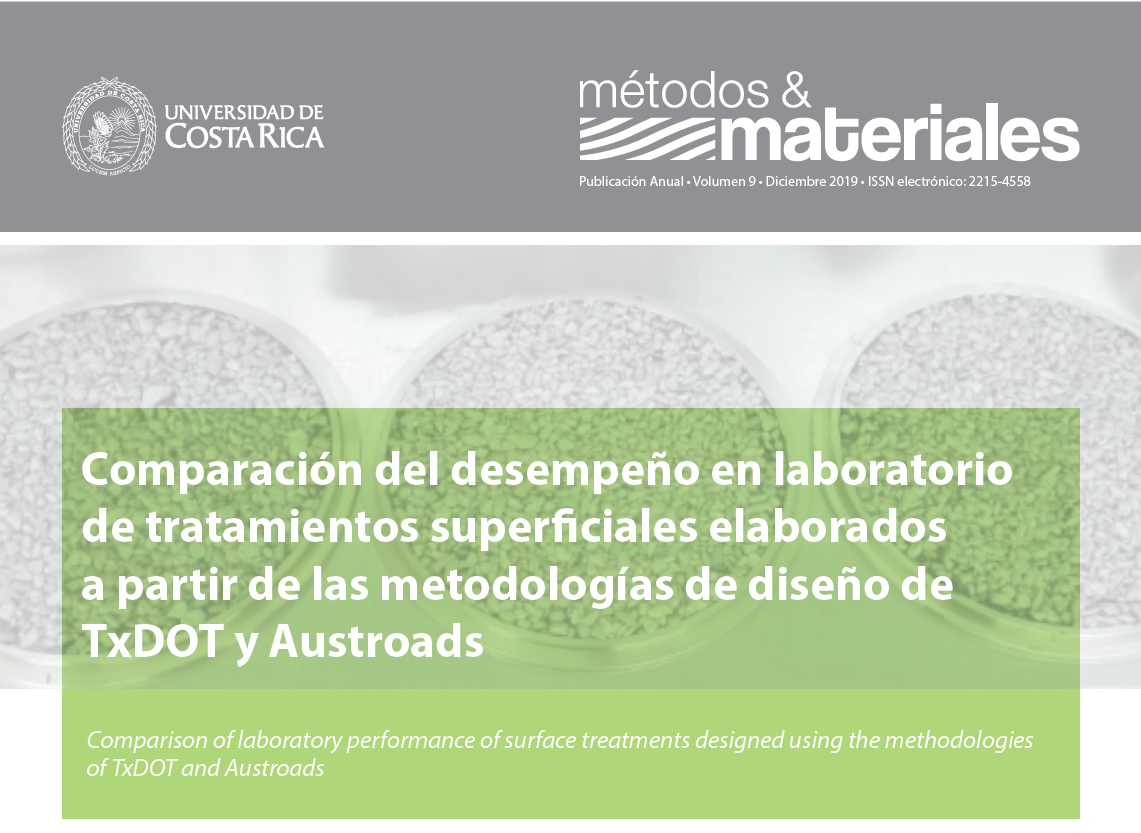Abstract
Chip seals are an alternative to preserve the current condition of a road and to improve some of its characteristics such as impermeability and surface texture. Despite its benefits, there is currently no formally defined test method to evaluate the laboratory performance of chipseals elaborated from different materials or design methodologies. For this reason, in this article, based on a series of modifications made to the ASTM D7000 test, the performance of chipseals developed from the design methodologies adopted by the transportation agencies TxDOT and Austroads is compared. These methodologies start from the two most fundamental lines of thought for the design of asphaltic surface treatments, the Hanson principles, used in the Austroads method and the Kearby principles, used in the TxDOT method. From the tests carried out, it was determined that the Austroads methodology promotes chipseals that would have a greater amount of
remaining aggregate, after simulating the effects of vehicular traffic on the samples of asphaltic surface treatments prepared, being an aspect that could positively influence their performance.
References
Alderson, A. (2006). Update of the Austroads sprayed seal design method (No. AP-T68/06).
American Society for Testing and Materials (ASTM). Standard Test Method for Sweep Test of Bituminous Emulsion Surface Treatment Specimens ASTM D7000-11. Estados Unidos: ASTM.
Gundersen, B. (2008). Sprayed Sealing Conference – cost effective high performance surfacings. Chipsealing Practice in New Zealand (pág. 13). Adelaida, Australia: Australian Road Research Board.
Holtrop, W., Busuttil, R., Esnouf, J., Jones, J., Neaylon, K., & Patrick, S. (2013). Update of double/double design for Austroads sprayed seal design method (No. AP-T236/13).
Lord, A., & Schuler, S. (s.f.). An Analysis of Two Leading Chip Seal Design Methods. Fort Collins, Colorado: Colorado State University.
Patrick, J., & Gundersen, B. (2005). Chipseal Design. En Chipsealing in New Zealand (págs. 327-376). Wellington, New Zealand: Transit New Zealand.
Shuler, S. (2011). Manual for emulsion-based chip seals for pavement preservation (Vol. 680). Transportation Research Board.
Zúñiga, N. (2012) Propuesta de una metodología para la evaluación del desempeño de tratamientos superficiales en laboratorio. Proyecto de graduación para optar por el grado de Licenciatura en Ingeniería Civil, Escuela de Ingeniería Civil, Universidad de Costa Rica, San José Costa Rica.


